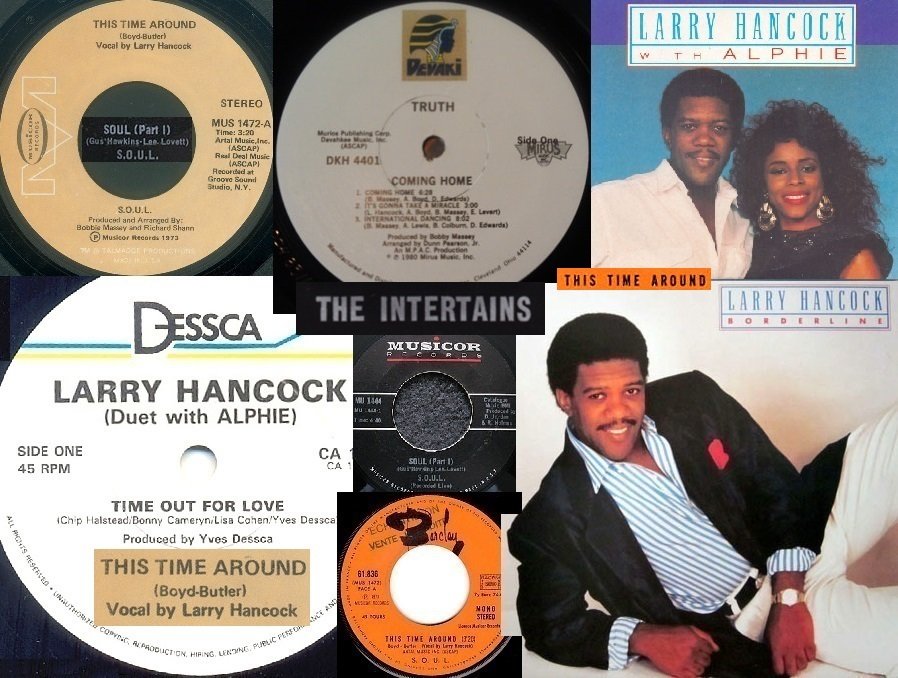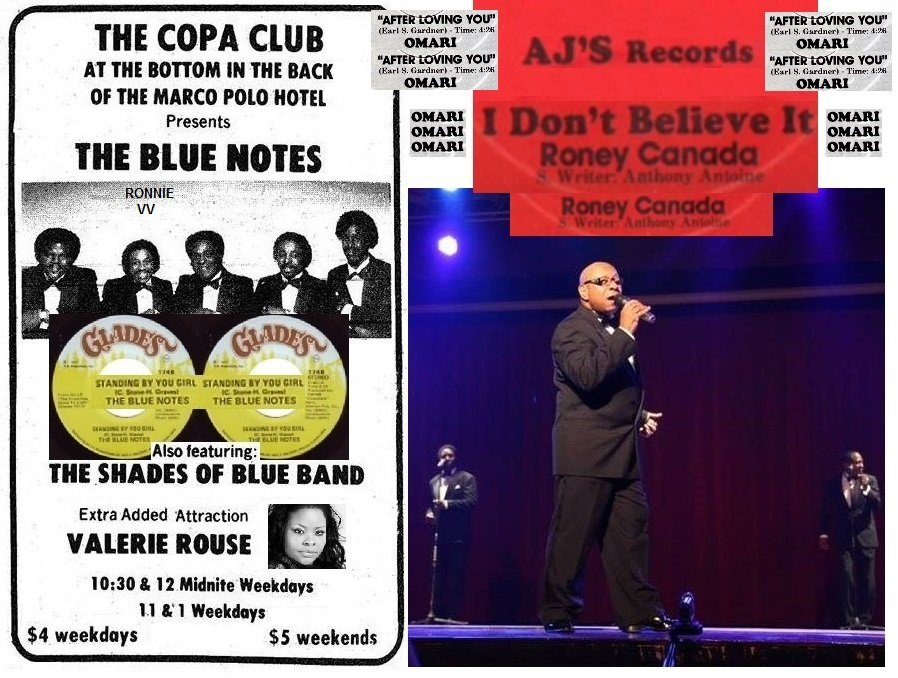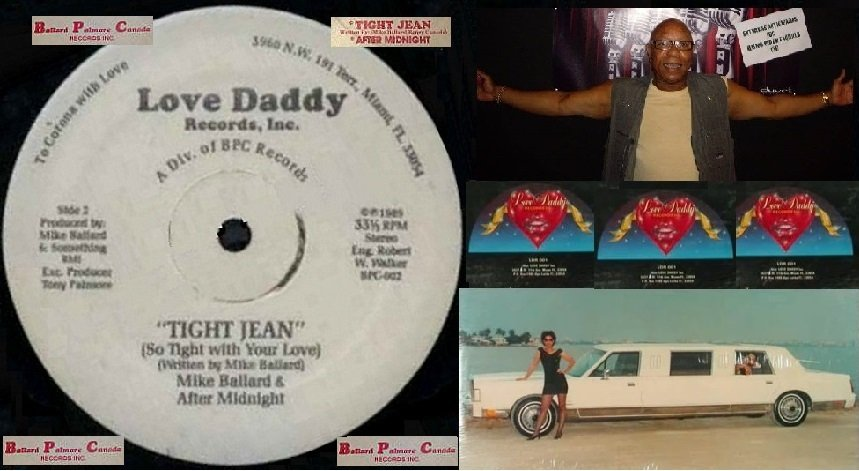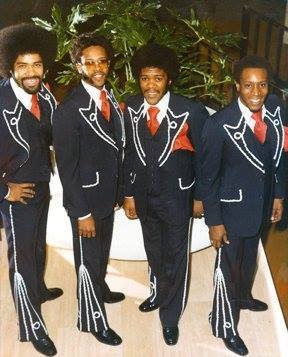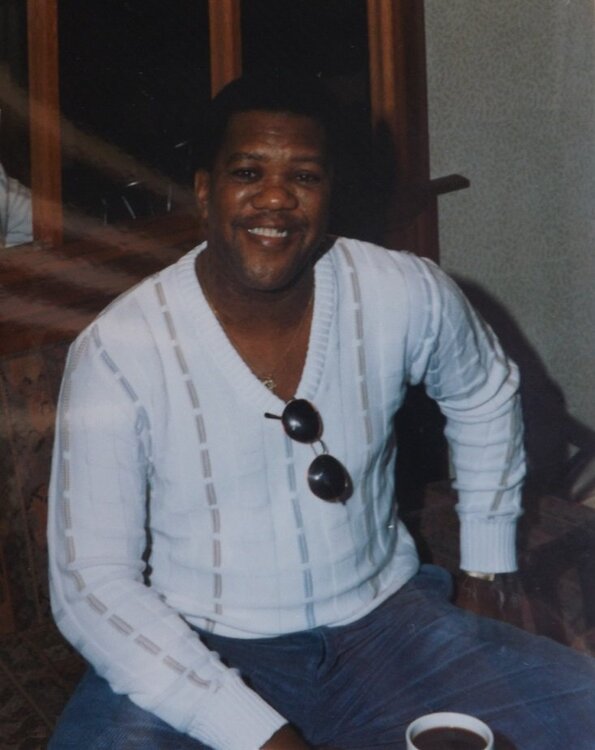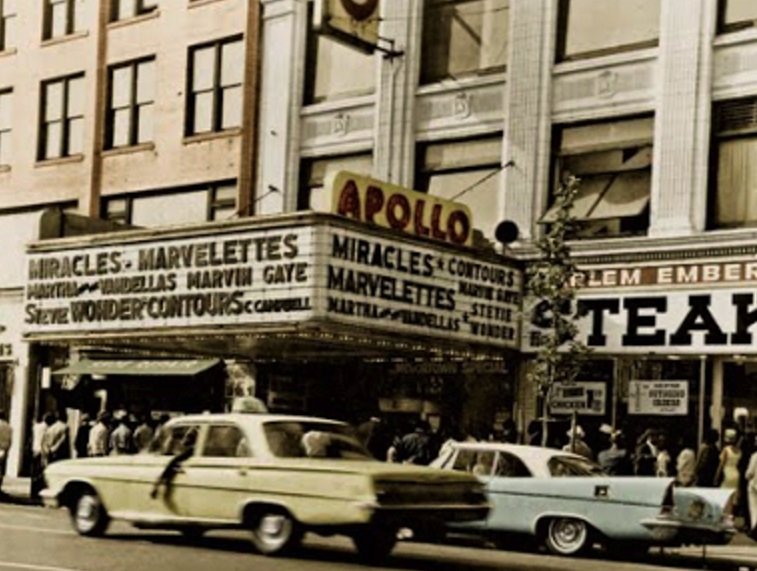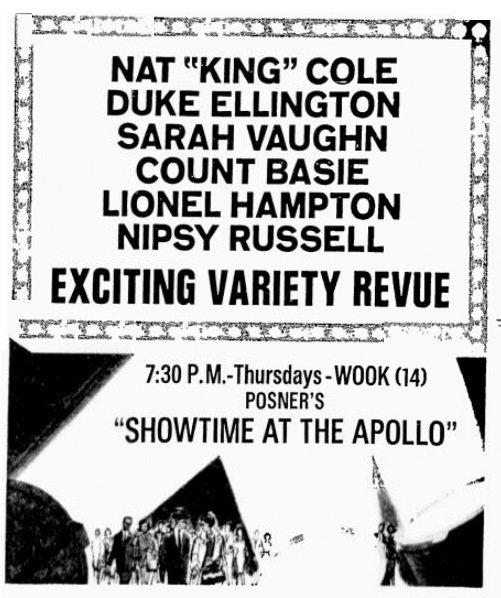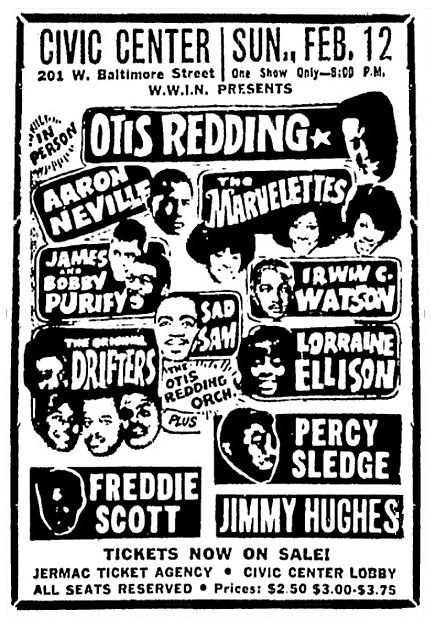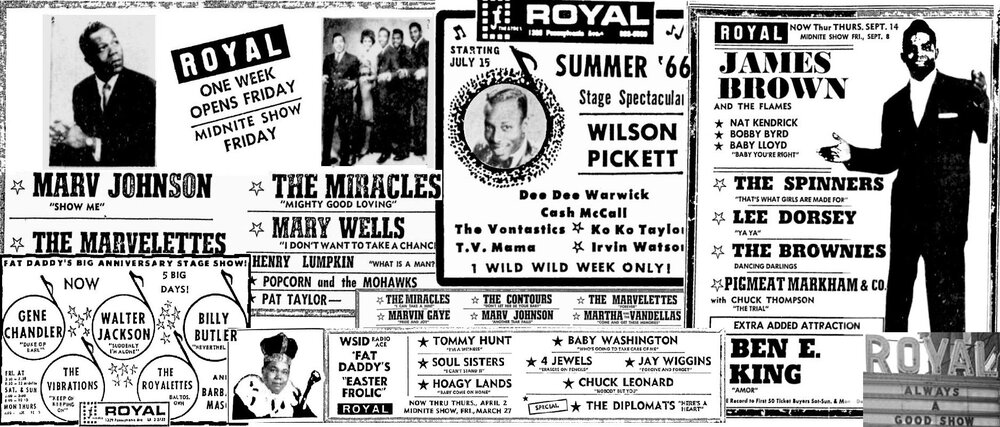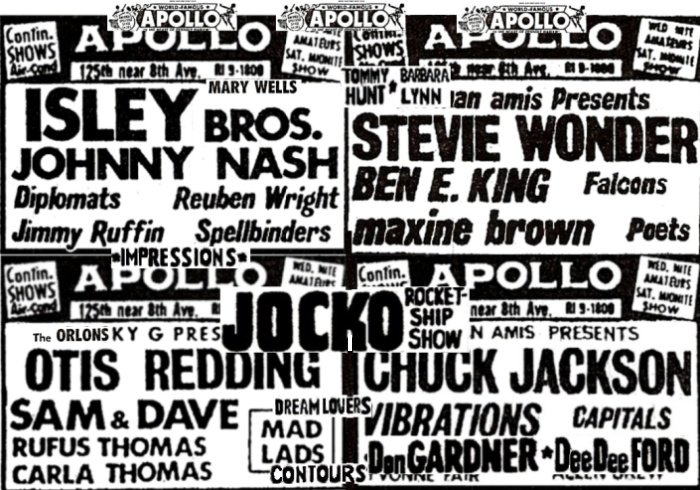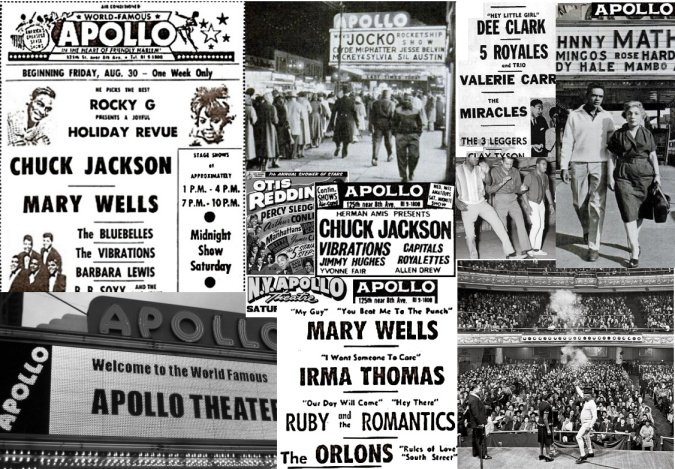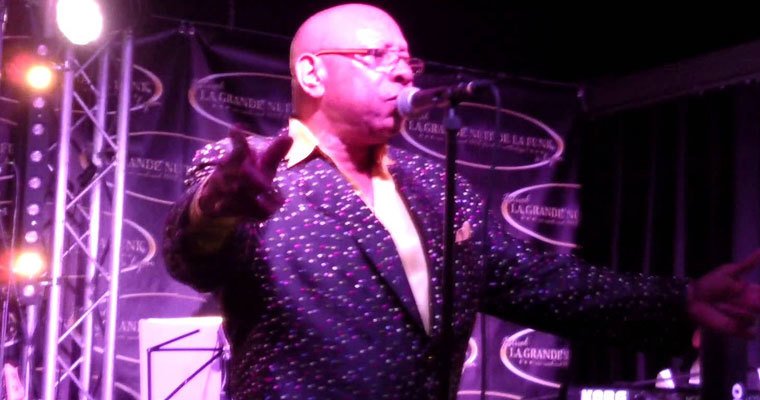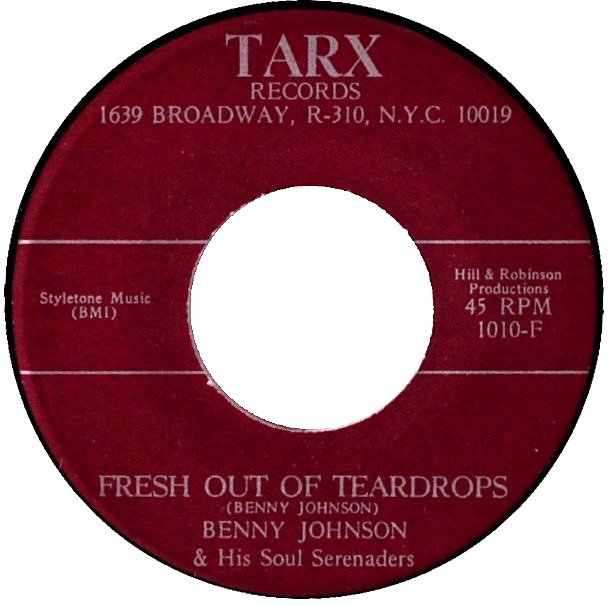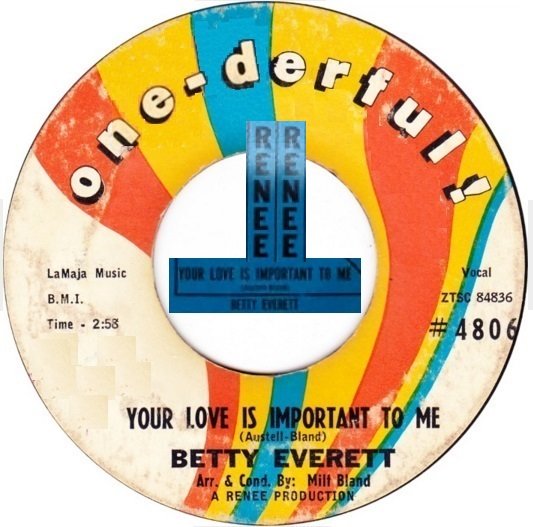-
Posts
7,237 -
Joined
-
Last visited
-
Days Won
45 -
Feedback
0%
Content Type
Forums
Event Guide
News & Articles
Source Guidelines and Help
Gallery
Videos Directory
Source Store
Everything posted by Roburt
-
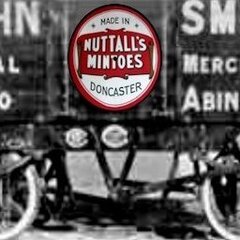
Articles: Ronnie Canada: From Cleveland Ohio to Watford
Roburt replied to Roburt's topic in Front Page News & Articles
Having trouble keeping him on track with regard to what he's gonna perform in the MS room @ the Cleggy Weekender in just over 3 weeks time. He does so many different songs in his usual shows (60's soul, Stax, Motown, Atlantic, Philly, 70's soul, James Brown stuff, Edwin Starr tracks, etc) that keeping him to just 4/5 tracks that he was actually personally involved with is proving a problem. One song that's a staple in his songbook is "Hold On I'm Coming" ... he sings both parts in his version (both Sam & Dave's bits OR IF YOU LIKE both Chuck & Maxine's bits). -
My top 8 would have to include at least 2 x 60's Impressions tracks, a Billy Stewart, a Dells, Lorraine Ellison's "Stay With Me Baby", Artistics "I'm Gonna Miss You", Tommy Tate "School of Life" a 70's Curtis Mayfield .... jjeeessss I already got to 8 without any real MS cuts amongst em ... not an easy task this selecting just 8 top tunes.
-

Cleveland Soul - the Intertains, S.O.U.L. & Truth
Roburt replied to Roburt's topic in All About the SOUL
-

Articles: Ronnie Canada: From Cleveland Ohio to Watford
Roburt replied to Roburt's topic in Front Page News & Articles
Ronnie live ........... https://www.youtube.com/watch?v=aUEBslTkB4k https://www.youtube.com/watch?v=gy6ThqTDGQE https://www.youtube.com/watch?v=GjMDhknQ8cg https://www.youtube.com/watch?v=aEkyMmlf0wk ...... AND ...... the 1st record his vocals ever featured on ......... https://www.youtube.com/watch?v=JjH2iSH60x0 CATCH RONNIE PERFORMING LIVE @ the CLEETHORPES SOUL WEEKENDER -

Articles: Ronnie Canada: From Cleveland Ohio to Watford
Roburt replied to Roburt's topic in Front Page News & Articles
In addition to all the above career highlights, Ronnie has also been involved in a number of other projects. After Ronnie's solo spell with Aj's records, in 1988/89 he then returned to work with an old acquaintance, Hank Ballard's son Mike. The two worked on a track for Mike and this was released on Love Daddy Records (a division of BPC). The 12” was credited to Mike Ballard & After Midnight and the featured track was “Tight Jean”. Ronnie was part writer of the song which 1st appeared on the BPC label (the B being for Ballard & the C standing for Canada). More recently, he added his vocals to a cut by South African based Soul Fortune. “Missing You” (2013) has found fans across the world even though the release has been somewhat limited as it was only made available in digital format. https://www.youtube.com/watch?v=9I1xX7Ljhj4 -
Just a quick note to let folk know that there's a Facebook appreciation page for Larry Hancock. .......... https://www.facebook.com/groups/173304114216/ Larry started out in Cleveland group the Intertains (Uptown), he moved on to join S.O.U.L. and then was a major force in Truth. After that Larry went solo and performed / cut tracks for many more years. He recorded some duets that escaped in France (& the UK) but sadly passed away a number of years ago. Larry was very well respected and many who worked with him down the years held him in very high esteem. So it's only fitting that a page has been established on Facebook to remember this fine singer. S.O.U.L reformed to perform in the UK in the 90's (on a London concert Ace promoted) and I got to meet the guys before their show. It was a real pleasure to spend some time with Larry. ......... Truth ........... AND ... ............ Larry in London ........
-
Still haven't managed to track down much (if anything) about these 'annual shower of stars' shows .... ... the management @ the Apollo kept the place largely drug free BUT unfortunately, drug dealers would hang out in the alley off 126th St where the stage door was. So artists who needed an up to go on stage or a down to wind down quickly after their performance, could always get some stuff. Under the stage was a large area where groups would rehearse. The 4 Tops would go down there to practise their steps when they had a stage-dance (that went with a new 45) to get right. Posted up a pic of them doing just this on an old related thread. A review show stages in DC @ the Howard Theatre ... no doubt this lot would have ended up playing the Apollo a few days / weeks later.
-
A great story about the Apollo ........ .... Tom Jones had just started having hits in the US & was booked on a Dick Clark package tour of the US. He was in New York looking around before the tour commenced & bumped into Dionne Warwick outside the Scepter Records building. She knew him from playing gigs & tv in the UK. They chatted & he asked where she was going ... I'm off to the Apollo .... can I come with you, he pleaded. So she took him to the Apollo where Chuck Jackson was topping the bill that week ... he was introduced to Chuck & they got on well .... time for Chuck to hit the stage & after he starts his show, he calls Tom out on stage with him. Tom gets the chance & so sings a bit ... it was the 1st time Tom had been to the Apollo & he was out on stage singing & killing the audience ... by all counts he told folk afterwards that he'd never felt anything like that before in his career ... can't beat a chitlin circuit (Apollo) audience.
-
Motown Review @ the Apollo ....... ....AND ... the same package @ the Howard in DC (some changes in the line-up had occurred) ...
-
October 1964 ........ WASHINGTON DC ..... ....... a show staged @ the Howard Theatre & a TV show on a local channel that week ........
-
This (see below) was obviously almost the same package playing in Baltimore the night after the Apollo show ..... The Royal Theatre in Baltimore had abandoned putting on live shows in mid July 1966 and was by now (early 67) just showing films. It was to shut in the near future & the building would be torn down not too long after that. The other chitlin circuit theatres followed the Royal in quick succession with only a couple (including the Apollo) surviving into the 70's. HOWEVER, some of the old buildings remained standing & in more recent years they have been returned to their old glory. Big civic auditoriums (with much more capacity) had started putting on soul reviews around 1962/63 and could obviously afford to pay the acts more to appear. Coz of this, the days of the week long stays at a venue were ending by the mid to late 60's and shows started to play each venue for just 1 night.
-
An example of the type of package that toured the US east coast theatres every week up to the late 60's .... .... these were all staged at the Royal in Baltimore, but they would move on to play in DC, Philly & end up at the Apollo .... .... the bottom left package has Barbara Mason trying to squeeze her name onto the handbill ....
-
-
I'd guess that this was just one of many big touring revue shows that played the Apollo in the 60's. Most tours did all the chit-lin circuit theatres (Detroit, Chicago, Baltimore, Philly, DC + others) and after 2/3 months or so on the road would finish off with a week at the Apollo. The Motortown Reviews always did this as did James Brown's Revues & other top act led packages also. I think that the Apollo management must have picked out one of these packages each year (?) to form this 'special show'. Was it an anniversary event of some kind (each Feb) or what, I can't at this time tell you. I don't think it had any massive major importance above all the other 'packages of stars' that played the Apollo. It was probably just a great marketing ploy BUT then I could be totally wrong altogether. This show seems to have been staged in 1967, so maybe they had one each year starting back in 1961.
-
RONNIE CANADA From Sly, Slick & Wicked to the Cleggy weekender Ronnie Canada really is an 'international man of soul'. Starting out in Cleveland way back in the early1970's, he got his break in the music business with S.O.U.L. (acting as their roadie + sound & lighting technician). The group was centred around lead singer Larry Hancock and Ronnie has never forgotten the kindnesses that Larry showed him all those years ago. Back then Larry was already a veteran in the biz, having led the Intertains (Uptown recording artists) and written “Working On Your Case” for the O'Jays. When with the group, it was Ronnie's job to collect Beloyd (Taylor) each day and take him to the group's rehearsal session. It was Beloyd that gave Ronnie the belief that he could be a good singer himself, and set him on the path towards his later career. Ronnie continues to honour the memory of Larry Hancock by running a Facebook page that's dedicated to his appreciation. When S.O.U.L. broke up in the mid 70's, Larry Hancock helped form Truth (members: Larry Hancock, Al Boyd, Leo Green and Russell Evans). Ronnie was kept on (as their sound technician) and so got to further advance his musical skills. By 1978, Ronnie was an important member of Cleveland based gospel outfit, the Hubbard Singers. He also secured a role in a hit stage play 'Singin & Shouting' with another member of the cast being Alltrina Grayson (later to sing with Bobby Womack). While he was in the play, he got word that members of the group Sly, Slick & Wicked wanted to speak with him. They talked and Ronnie soon found himself a member of the Cleveland based trio. The group landed a record deal with Carl Maduri's Sweet City and started rehearsing for an upcoming studio visit. Ronnie was selected as the lead singer on the song “All I Want Is You” and so spent some weeks learning & rehearsing it. However on the day the group went into the studio, with the song's composer Dunn Pearson acting as producer and arranger, group leader John Wilson decided he would assume lead vocal duties. So the track was recorded that way and the cuts were licensed by Epic in the US and released to a luke warm reaction. However, here in the UK, Modern Soul fans were soon searching out copies of the 45 and it quickly took on anthem status. Other tracks were cut by the group, Ronnie singing lead on at least one, but this failed to make it onto vinyl. So Ronnie moved on, spending some time in Hank Ballard's group the Midnighters. Another opportunity soon presented itself though when the Blue Notes needed some new members after splitting from Harold Melvin. Group members Larry Brown & John Atkins went all the way back to the mid 60's (the group's “Get Out” period) and so had seen no reason to abandon their pedigree and give up the name. The group had already cut good tracks for Uni & Glades records (Florida: mid to late 70's) and were a popular live attraction when Ronnie joined their number. They had cut songs such as "Here I Am", "People Are Running Around" & "Standin' By You Girl", all of which soon found favour with British soul fans. One good gig the Blue Notes (with Ronnie as a member) played back then was at the Marco Polo Hotel & Resort on Miami Beach in 1982. In that period, he got to hang out with the likes of Rocky Mizell, Jimmy 'Bo' Horne and David Hudson (David being like a brother to him). Ronnie also got to record some solo tracks down in Miami with Clearance 'Blowfly' Reid and Willie Clarke, but these failed to escape from the tape vaults. However, Harold Melvin wasn't happy that two sets of Blue Notes were out there and so he took legal action against the Florida based outfit. Wanting to move on, the guys changed their name to Caviar and with Ronnie on lead vocals they cut “Never Stop Lovin' You” for Survivor (1982). They also laid down further tracks at that time but these didn't escape until an album was put out by Boogie Time Records (France: 2009). After the Caviar experience, he returned to Cleveland (1983) and took on a long residency at the Native Son club. His next big role came when he joined the group Omari. Another member of the group was Vince Broomfield and via him, Ronnie got to know the whole Broomfield family (which included singing stars Eugene & Dee Dee Wilde). Splitting their time between Philly & Florida, the group kept very busy. At one stage they toured with Betty Wright as her backing band. In their own right, they had the popular “After Loving You” out on Bound Sound Records (1983) which met with good reaction from soul fans as far apart as the UK and South America. The group's popularity in Sth America was such that they got to appear on a top TV show in Colombia. After Omari split, Ronnie hooked up with a version of the Drifters and the group played gigs right across Spain, including a 6 month period in Majorca. Returning to the US, he went solo and cut "I Don't Believe It" which escaped on AJ's Records out of Florida (1987). Copies of this 12” sold well in the UK and that once again raised Ronnie's profile (despite his name being shown on the label as Roney Canada). This track has stood the test of time well and has been included on quite a few soul compilation albums released in the last 8 years. Needing steady work, Ronnie went back into the group environment and returning to Europe, he started singing with the Platters and American Drifters. These outfits were a top live draw across Europe but Ronnie wanted to get back into the recording side of things. So, he started to collaborate with people in the house & garage worlds, cutting for Tomohawk (“The Power's In The Music” & “Tell The World” – 1993/94) and Shaboom (“Can't Get Enough Of Your love” – 2004). This work also resulted in him being used by various similar acts, Ronnie adding his vocals to tracks by the likes of Fabio Tosti, Audioplayerz and (more recently) Darockwildas. That just about brings us up to date. Ronnie, who now resides in Watford, keeps up his heavy schedule in the music world. He has just returned from Holland where he performed at the Bevrijdingsfestival. Next up for him is an appearance at the big 6T's Cleethorpes Soul Weekender. He will be entertaining the crowd in the Modern Soul room at the weekender on the Sunday afternoon (approx 4pm), he's sure to turn the room into a 'land of a 1000's dances'. So, if you are going along to this iconic event, don't miss the chance to catch Ronnie performing live. He's also still active in the studio and continues to work on numerous recording projects One of these (that is about to escape in a few weeks time) being the 'Edwin Starr EDM Remixes 2016' album (on which he sings). So the musical mystery tour that Ronnie has been on for 40 plus years has taken him from Cleveland, across the whole of the USA, onto South America and now Europe. Who knows what lays ahead of him, only the future will show that. JOHN SMITH; May 2016
-

Mystery 45? Johnny Cameron - People Are Changing on Sanfris
Roburt replied to soulfulsevens's topic in Look At Your Box
Well it seems that Frank Bruno arranged the track, so just ask him all the details !!! -

Twisted Wheel and The Abadi brothers in Blackpool
Roburt replied to Suinoz's topic in All About the SOUL
Yes (unless my memory is playing tricks on me) they also had a club called the Twisted Wheel in Blackpool (this would have been around the late 60's). I have no idea when it opened & closed though. I do recall being given free tickets to go to Sunday sessions there when attending a Saturday night niter around that time. As we were from Yorkshire & heading in the opposite direction on a Sunday morning, we never took up the invitation. We were also given free tickets to attend the Manc club's Sunday afternoon sessions & never went to those either. I do know that both clubs had similar music policies (i.e. soul). -
Tarx Records operated out of the same NY address as Triode ... AND ... Doles Dickens worked on some of their cuts. He doesn't however get a mention on the label of this Tarx 45 from Baltimore's Benny Johnson (cut a good while before his Today stuff) ....
-
Which incarnation of this track ??? the Renee / 1st One-derful, the 2nd One-derful or the ABC version ??
-
Betty certainly must have liked this Leo Austell / Milton Bland (Monk Higgins) song as it escaped by her on 4 different US singles ... It first appeared on the Renee label in 1962 .... it was then picked up by the Leaner Bros and released C/W "I've Got A Claim On You" on One-derful (#4806) ..... that 45 was then quickly re-jigged and the cut was coupled with "I'll Be There" to orm a revised #4806. In it's One-derful form it charted locally in Chicago ..... Betty moved on with her career and had much success with Vee Jay but they went bust and so she signed with ABC Records (who always had a strong Chicago presence). With ABC, she cut the song again in 1966 with Johnny Pate acting as producer / arranger / conductor (ABC #45-10861). This incarnation of the song again did well & even charted as far away as WYLD in Feb 67. Anyone know why she seemed to like this song so much (& I know she cut quite a few Leo Austell songs so they must have been friends).
-

Tonite I Have Mostly Been ... Speakin To Lou Ragland
Roburt replied to Roburt's topic in All About the SOUL
Chattin' with Lou recently and got to talkin' bout his recent / current work in the studio. He's still trying to get Bobby Jonz / Jones into the studio to add his lead vocals to a song that the backing track is just about finished for (just some lead guitar solo work to add when the lead vocals are in place, Lou doesn't want the solo to clash anywhere with the lead voice). After that we talked about the stuff cut in Harvey Fuqua's studio (which Lou still uses at times) right up to Harvey's passing. It seems that Harvey was on an ol' skool kick & had set up a few old 60's artists to record. He was gonna put out a few new releases all at once to establish an ID for his proposed new label. So Harvey had fetched Etta James into Vegas and they had cut some new duets together. He'd also recorded Brenda Holloway on new stuff and another couple of old 60's artists. But when he died, no one else in his family / circle seemed interested in taking these tracks forward or makin proper use of the studio. Lou is trying to see what he can do but the family (who obviously now own these recordings) aren't really interested. We then sidetracked to old recording work & Lou spilled a few facts .... he told me that Jan Jones (RIP some years back in a car crash) cut "Independent Woman" in Agency studio but the masters were taken over to Boddies studio to have a disc cut from the tapes. Early publicity (back at the time that the Jan Jones 45 was released) stated that a 2nd song would form the B side to the 7" release (can't recall the title now but have the details somewhere) .... anyway, the 2nd song was all ready to be recorded but Jan never got round to it in the excitement of the studio session & getting a master disc cut of Indy Wolman. So, the 45 was released as Part 1 & 2 with the 2nd song never actually being recorded. Lou's recently been in touch with Lilian Kyle in an attempt to track down the master tape for his version of "Patch Up" which was cut in an LA studio in the late 80's but she isn't co-operating with his attempts to find it. ......... MORE LATER .......... -

Frankie Kennedy (Frankie & the Spindles) R I P
Roburt commented on Roburt's article in News Archives
A show in April 1968 when the Spindles were still called the Spinners ....... -
I now live in Oxford, so can visit the local library and check the papers for that week. I''ll do that & report back.
-

SAD NEWS: Reggie Torian (Impressions) .. R I P
Roburt replied to Roburt's topic in All About the SOUL
Reggie in action ....



